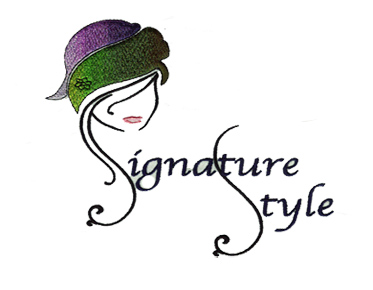From Pixels to Precision: A Comprehensive Guide to Converting Digital Art into Vector Graphics
In the realm of digital design, the transition from raster to vector is a transformative process that elevates the scalability, flexibility, and overall quality of digital art. Converting digital art into vector graphics unlocks a world of possibilities, offering designers the ability to create images that can be resized without loss of quality. This blog will guide you through the intricacies of this process, providing insights into why vector graphics matter and how to seamlessly convert your digital art into this versatile format.
Understanding Vector Graphics
Before delving into the conversion process, it's essential to grasp the fundamental difference between raster (pixel-based) and vector graphics. While digital art created in software like Adobe Photoshop is raster-based, vector graphics are created using paths defined by mathematical equations. This distinction is crucial for comprehending why vector graphics excel in certain applications.
Advantages of Vector Graphics
- Scalability:
One of the advantages of vector graphics is their ability to be scaled without losing quality. Unlike raster images, which become pixelated and lose quality when resized, vector graphics can be scaled infinitely without sacrificing clarity. This makes them ideal for logos, illustrations, and any artwork that needs to adapt to various sizes. - Versatility:
Vector graphics are versatile and can be easily manipulated. Design elements such as lines, shapes, and colors are defined by mathematical equations, allowing for precise adjustments. This flexibility is particularly advantageous when creating complex or intricate designs. - Print Quality:
Vector graphics maintain high-quality resolution, making them the preferred choice for print materials. Whether it's business cards, banners, or billboards, vector images ensure that your artwork appears crisp and clear at any size. - Editing Ease:
Vector graphics are editable on a granular level. Designers can modify individual components, adjust colors, reshape paths, and fine-tune details without compromising the overall integrity of the artwork. This makes vector graphics conducive to iterative design processes. - File Size:
Vector files are typically smaller in size compared to raster files, as they don't store pixel-based information. This results in more efficient storage and faster loading times, which is advantageous for web graphics and digital applications.
Converting Digital Art into Vector
Graphics
Now, let's explore
the step-by-step process of converting your digital art into vector graphics:
- Choose the Right
Software:
To initiate the
conversion process, you'll need vector graphic design software. Adobe
Illustrator is an industry-standard choice, known for its robust vector editing
capabilities. Other alternatives like CorelDRAW and Inkscape, a free and
open-source option, are also viable choices.
- Import Your Digital Art:
Open your chosen
vector graphic software and import your digital art file. Most software allows
you to import common raster file formats such as JPEG, PNG, or GIF. Your
digital art will appear as a single, flattened image.
- Tracing Paths:
The core of
converting raster to vector lies in tracing paths over your digital art. This
involves creating vector paths that follow the contours and shapes of the
existing image. In Adobe Illustrator, you can use the "Image Trace"
feature to automate this process. To get the required amount of accuracy and
detail, adjust the settings.
- Refining Paths:
While automated
tracing provides a good starting point, manual refinement is often necessary
for intricate or complex designs. Zoom in and use vector editing tools to
refine paths, ensuring they accurately represent the nuances of your digital
art. Pay attention to details, smooth out curves, and simplify shapes where
needed.
- Color Separation:
Vector graphics use
a different approach to color than raster images. In vector art, colors are
applied to distinct shapes rather than individual pixels. Separate colors into
distinct vector shapes, allowing for easy editing and modification. This step
is particularly important for maintaining color fidelity and flexibility.
- Gradients and Shading:
Vector graphics
handle gradients differently than raster images. Instead of pixel-based
gradients, use vector-based gradients for smoother transitions between colors.
For shading effects, create shapes with varying opacities or experiment with
vector-based brushes.
- Layers and Organization:
Organize your vector
artwork using layers. Layers help you manage different elements of your design,
making it easier to edit, hide, or rearrange components. This organizational
structure enhances workflow efficiency, especially for complex designs.
- Save in Vector Format:
Once you're satisfied with the vectorized version of your digital art, save the file in a vector format such as SVG (Scalable Vector Graphics), AI (Adobe Illustrator), or EPS (Encapsulated PostScript). These formats preserve the vector information and maintain the scalability and editability of the artwork.
Tips for a Successful Conversion
- Start with
High-Resolution Art:
Begin with a high-resolution version of your digital art. Higher resolution provides more detail for the conversion process, resulting in a cleaner and more accurate vector representation. - Adjust Thresholds in
Tracing:
When using automated tracing, experiment with threshold settings to find the right balance between retaining detail and simplifying the image. Adjusting parameters like thresholds and paths can significantly impact the outcome. - Use Reference Images:
Have a reference image of your digital art available for comparison. This helps you identify discrepancies and ensures that the vectorized version aligns with the original vision. - Be Mindful of Detail:
Vector graphics excel in capturing clean lines and shapes. However, excessive detail in complex artwork may not translate well. Simplify intricate details to maintain clarity and legibility. - Experiment with
Techniques:
Vectorization techniques can vary based on the characteristics of your digital art. Experiment with different tools, settings, and techniques to find the approach that best suits your specific artwork.
Conclusion: Transforming Pixels
into Precision
Converting digital
art into vector graphics is a skill that opens
doors to limitless creative possibilities. Whether you're a graphic designer,
illustrator, or digital artist, mastering this process enhances your ability to
create scalable, versatile, and visually stunning artwork. Embrace the
precision and flexibility of vector graphics, and watch as your digital
creations seamlessly transition from pixels to precision.



